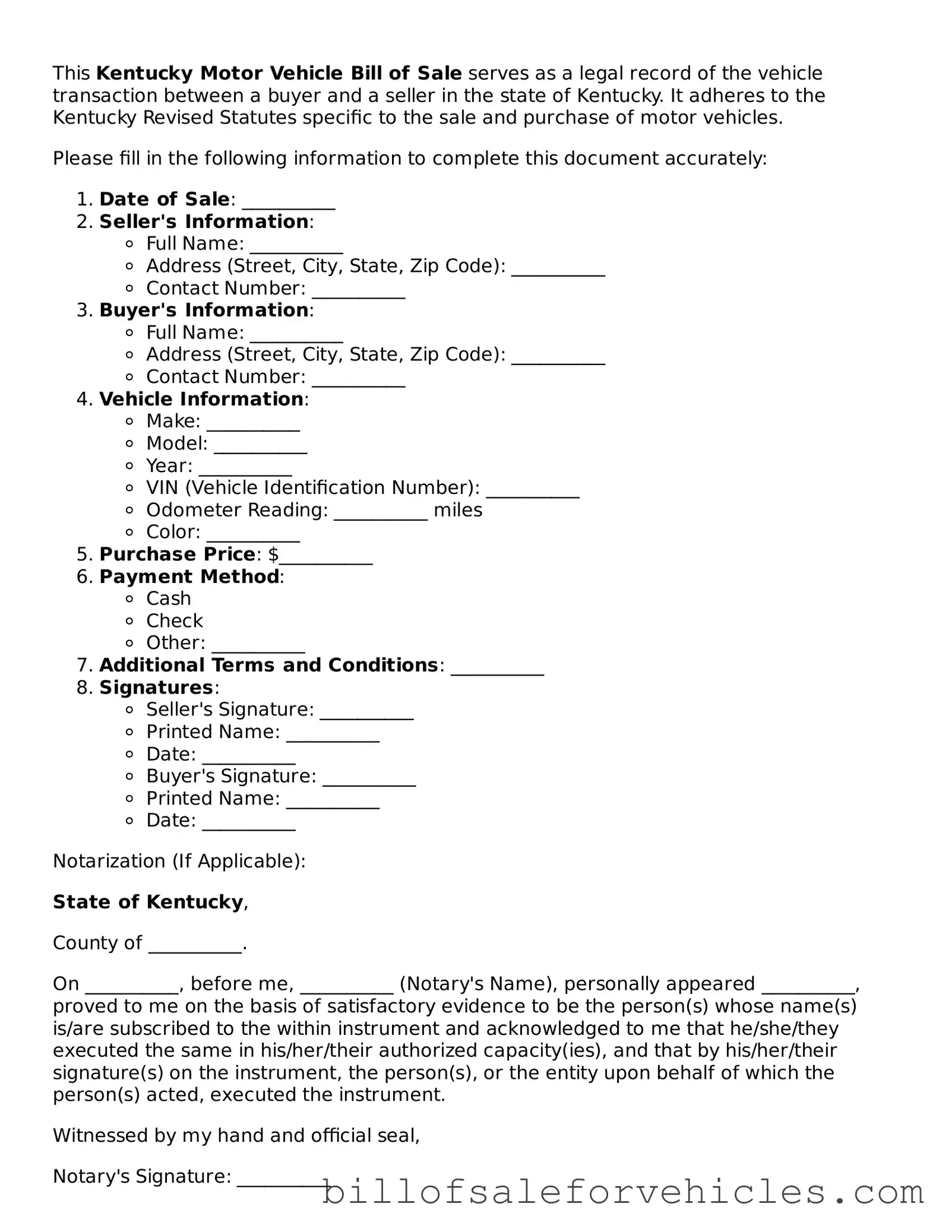What is a Kentucky Motor Vehicle Bill of Sale?
A Kentucky Motor Vehicle Bill of Sale is a legal document completed and signed by both the seller and the buyer of a vehicle. It acts as a proof of ownership transfer from the seller to the buyer and includes essential information such as the vehicle's make, model, year, and VIN (Vehicle Identification Number), alongside the sale price and the date of sale. This document not only confirms the transaction between parties but is also crucial for the new owner's vehicle registration process in Kentucky.
Do I need to notarize the Kentucky Motor Vehicle Bill of Sale?
In Kentucky, the Motor Vehicle Bill of Sale does not need to be notarized. However, having it notarized can add an extra layer of legitimacy to the document, aiding in the resolution of any potential disputes or discrepancies that might arise regarding the vehicle's sale or ownership. While not a requirement, it is a recommended step for both the buyer and seller's protection.
Can I use a generic bill of sale for my vehicle transaction in Kentucky?
Yes, a generic bill of sale can be used for vehicle transactions in Kentucky, as long as it contains all the necessary information required by the state. This includes the vehicle description (make, model, year, VIN), the sale price, and the date of sale, as well as the printed names and signatures of both the buyer and seller. To ensure that all details meet state requirements, it is advisable to use a template that is specifically designed for Kentucky vehicle transactions.
What should I do after completing the Kentucky Motor Vehicle Bill of Sale?
After the bill of sale is completed, the buyer should keep a copy for their records and use the document to register the vehicle at their local County Clerk's office in Kentucky. The buyer will need to present the bill of sale along with other necessary documents, such as proof of insurance and a valid identification, to complete the registration process. The seller should also retain a copy of the bill of sale for their records to have proof of the transfer of ownership and to assist with any future inquiries.
Is the Kentucky Motor Vehicle Bill of Sale sufficient for transferring vehicle ownership officially?
The Kentucky Motor Vehicle Bill of Sale is an essential document for transferring vehicle ownership, but it must be accompanied by other documents to complete the process officially. These include the vehicle's title, properly signed over by the seller, a completed Application for Kentucky Certificate of Title or Registration, and the payment of all applicable taxes and fees. Together with the bill of sale, these documents allow the buyer to register the vehicle in their name, officially completing the ownership transfer process.
